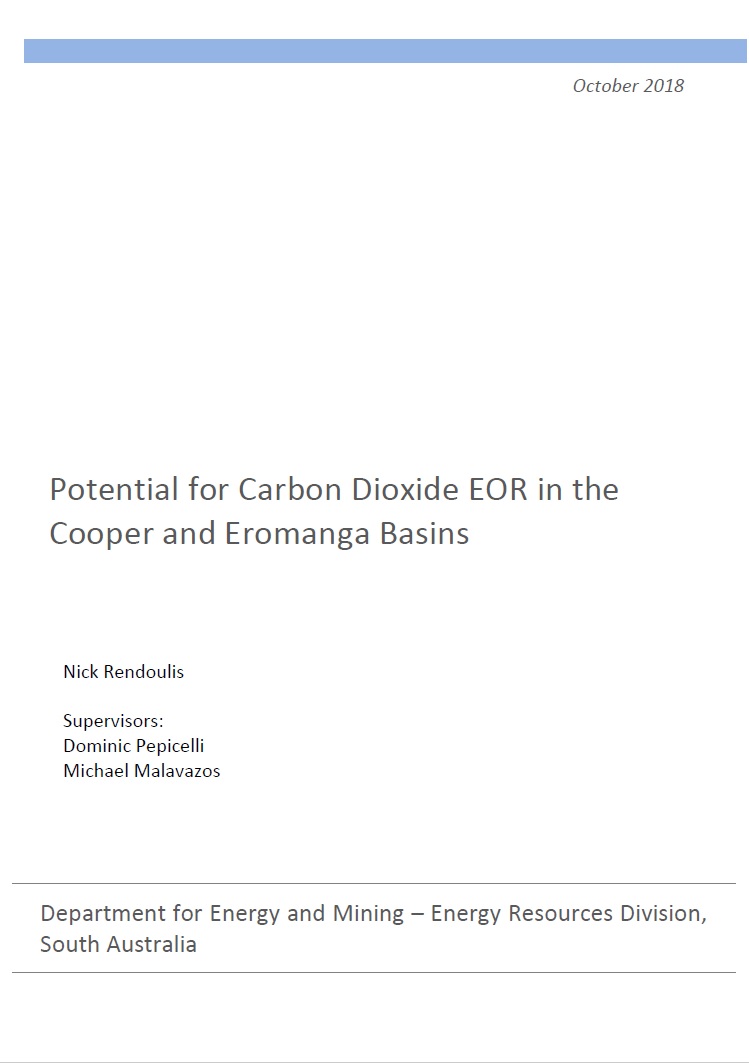On this page
Summary
South Australia has a large endowment of onshore storage reservoirs suitable for carbon capture and storage (CCS), particularly in the depleted oil and gas fields of the Cooper and Otway basins. The implementation of carbon capture and storage will decarbonise existing emissions intensive industries and increase their global competitiveness in a carbon constrained future. Carbon capture and storage gives South Australia the opportunity to create a new industrial ‘hub’ for competitive abatement of emissions – especially in sectors with difficult to abate process emissions such as cement, steel and iron manufacturing; natural gas processing; and biofuel production. Furthermore, carbon capture and storage can also enable new technologies such as low carbon hydrogen production from natural gas, enhanced oil recovery and direct air carbon capture and storage.
Analysis by the Intergovernmental Panel on Climate Change and International Energy Agency has consistently shown that carbon capture and storage is an essential part of the lowest cost path towards meeting global climate targets.
The Department are involved in the development and implementation of policies, international standards, and leading practice regulation to facilitate carbon capture and storage projects. The Moomba CCS project in northeast South Australia completed commissioning in September 2024 and is now injecting carbon dioxide in the depleted gas fields of the Cooper Basin. Each year, the Moomba CCS project will permanently store approximately 1.7 million tonnes of carbon dioxide processed by the Moomba gas plant – representing a cut of more than 7% to South Australia’s emissions. These fields have held natural gas and oil for 85 million years and can provide for safe, low-cost and permanent storage of carbon. In the long term, carbon storage in the Cooper Basin could store 20 million tonnes a year from other industrial emitters for more than 50 years.
DEM chairs the Standards Australia National Mirror Committee to contribute on the International Organization for Standardization (ISO) Technical Committee 265 for Carbon Capture Utilisation and Storage. The scope of ISO Technical Committee 265 is for the standardisation of design, construction, operation, environmental planning and management, risk management, quantification, monitoring and verification, and related activities in the field of carbon dioxide capture, transportation, EOR and geological storage.
Carbon Capture Utilisation and Storage (CCUS)
The Department acknowledge there is significant potential for enhanced oil recovery (EOR) in the South Australian Cooper and Eromanga basins. EOR using carbon dioxide (CO2) is of particular interest due to the added environmental benefit of sequestering CO2 underground. The descriptions and outputs provided relate to the CO2 EOR initiatives the Department are progressing.
Enhanced oil recovery, status and potential in Australia
DEM represents Australia as a member country of the International Energy Agency’s (IEA) Technology Collaboration Program (TCP) for EOR – an independent, international group of experts that enable governments and industries from around the world to share knowledge regarding EOR technology including CO2 flooding.
Potential for carbon dioxide EOR in the Cooper-Eromanga Basins
In 2018 a research project regarding the potential for CO2 EOR in South Australia was undertaken by the Department, including application in residual oil zones (ROZ). The research also involved screening of fields in the Cooper and Eromanga basins to determine where CO2 is more likely to achieve miscibility with oil. The final report is available to download with data and results provided as appendices.

Download the Potential for Carbon Dioxide EOR in the Cooper and Eromanga Basins (PDF 3.3 MB)
Presentations
| Presented at | Presented by and title of presentation |
| IEA Joint EOR/GOT Symposium Stavanger, Norway 24 November 2022 | The role of CCUS towards net-zero in Australia (PDF 5.8 MB) Dominic Pepicelli, Principal Reservoir Engineer - Engineering Operations |
|
EOR TCP - Enhanced Oil Recovery Technology Collaboration Programme Cartagena de Indias, Colombia 16-20 September 2019 | Carbon dioxide injection in the Residual Oil Zones of the Cooper and Eromanga Basins (PDF 4.2 MB) Dominic Pepicelli, Principal Reservoir Engineer - Engineering Operations |
|
IEA TCP for Enhanced Oil Recovery Workshop and Symposium Copenhagen, Denmark 6 September 2018 | Enhanced Oil Recovery, Status and Potential in Australia (PDF 4.2 MB) Dominic Pepicelli, Principal Reservoir Engineer - Engineering Operations |
|
International Overview of CO2 Utilisation Symposium 2 July 2018 | CO2 Utilisation in Australia (PDF 2 MB) Michael Malavazos, Director - Engineering Operations |



